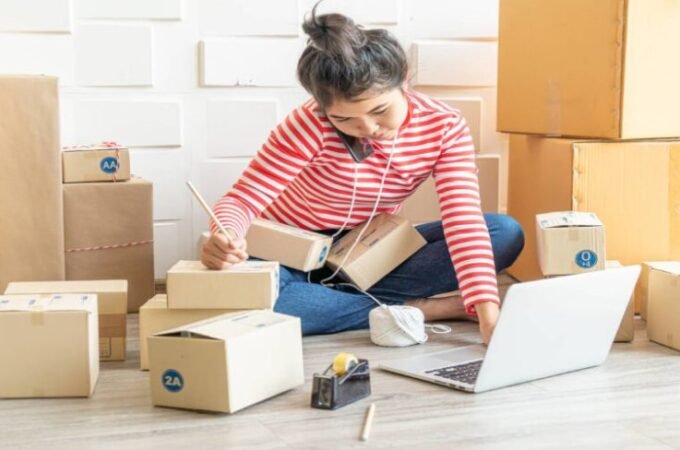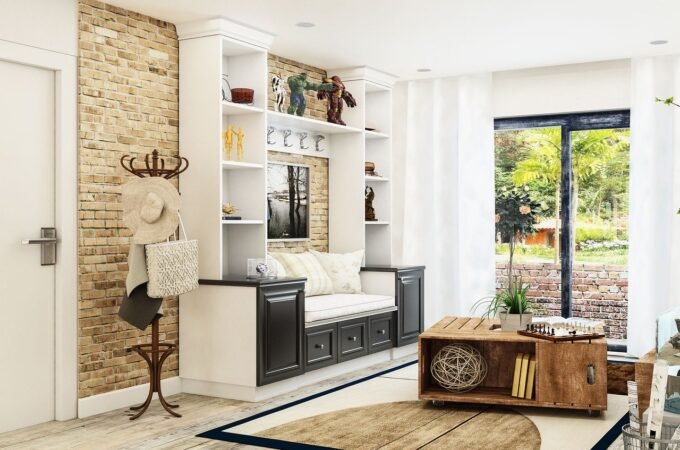
Nine Tips to Help You Adjust to a Smaller Home After Moving
In today’s fast-paced world, many people are finding themselves in need of a simpler, more manageable lifestyle. Whether driven by financial constraints, lifestyle changes, or a desire to embrace minimalism, downsizing has become a popular trend. For instance, in cities like Rathdrum, Idaho, where the cost of living is 10% higher than the national average, downsizing can be a practical solution to financial strain. However, the transition from a larger space to a more compact one is not without its challenges.
Adapting to a smaller living space often means letting go of certain possessions and creatively maximizing every square inch of your new home. This article provides nine practical tips to help you smoothly transition to a smaller home, ensuring that your new space is not only functional but also comfortable and inviting.
Table of Contents
ToggleDeclutter and Prioritize
The first and perhaps most essential step in downsizing is decluttering. When moving to a smaller home, you simply can’t take everything with you. Start by sorting through your belongings and deciding what you truly need and what you can live without. Items that you haven’t used in the past year or that don’t hold significant sentimental value should be considered for donation or sale. This process not only helps reduce the number of items you need to move but also gives you a fresh start in your new, smaller space.
Minimize Furniture
Furniture can quickly overwhelm a smaller home. Therefore, it’s crucial to minimize the amount of furniture you bring along. Evaluate each piece’s functionality and necessity. For items you cannot part with due to sentimental reasons or potential future use, consider renting a storage unit. In places like Rathdrum, Idaho, where affordability is a major factor influencing your decision, and it might not be feasible to purchase new furniture, storage units can be a practical solution to keep your cherished possessions without cluttering your home. A reliable Rathdrum self storage unit facility will ensure your precious belongings are safely stored away before you need them or can decide what to do with them.
Optimize Vertical Space
When floor space is limited, think vertically. Utilizing vertical space can significantly increase your storage options and help keep your home organized. Install shelves on walls to store books, decor, and other items. Wall-mounted cabinets in the kitchen can free up counter space and keep essentials within reach. Hanging organizers in closets can maximize storage for clothing and accessories. By taking advantage of vertical space, you can keep your living areas uncluttered and spacious.
Create Designated Zones
One of the challenges of a smaller home is ensuring that every area has a clear purpose. Creating designated zones for different activities can help make your space more functional and efficient. Even in an open-plan layout, you can use furniture placement, rugs, and lighting to define areas for living, dining, working, and relaxing. For example, place a desk near a window for a home office zone and use a sofa and coffee table to create a cozy living area. Clearly defined zones can make your smaller home feel more organized and comfortable.
Use Light and Color to Your Advantage
Light and color play a significant role in how spacious a room feels. In smaller homes, using light and color effectively can make your space feel larger and more inviting. Opt for lighter shades on walls, ceilings, and floors to create an airy and open atmosphere. Whites, pastels, and light neutrals reflect light better and can make a room feel more expansive. Additionally, maximize natural light by keeping windows unobstructed and using sheer curtains. Mirrors strategically placed opposite windows can amplify the amount of light in the room and give the illusion of more space.
Stay Organized
Organization is key to maintaining a functional and enjoyable living environment in a smaller home. Without proper organization, even the smallest spaces can quickly become cluttered and chaotic. Establish a regular decluttering routine to keep your belongings in check. Invest in smart storage solutions like drawer dividers, shelf organizers, and labeled bins to keep everything in its place. A well-organized home not only looks better but also functions more efficiently, making day-to-day life more manageable and less stressful.
Invest in Smart Storage Solutions
Smart storage solutions are essential for maximizing the usability of a smaller home. Look for innovative storage options that utilize every inch of available space. Under-bed storage boxes can keep seasonal clothing or extra linens out of sight but easily accessible. Closet organizers, including hanging shelves and shoe racks, can make the most of limited closet space. Modular storage systems that can be customized to fit your needs are particularly useful, allowing you to adapt your storage as your requirements change. These solutions help maintain a clutter-free environment and ensure that everything has its designated place.
Incorporate Reflective Surfaces
Reflective surfaces can create the illusion of more space by bouncing light around the room and opening up the area. Mirrors are the most obvious choice, and they can be placed in various locations to enhance the sense of space. Consider a large mirror on one wall or a series of smaller mirrors arranged in an artistic pattern. Glossy tiles, metallic finishes, and glass furniture also contribute to the reflective effect. These surfaces not only add to the aesthetic appeal of your home but also help in making the space feel larger and more dynamic.
Personalize Your Space
Despite the challenges of living in a smaller home, it’s important to make the space feel like your own. Personalizing your home with items that reflect your personality and style can make it more comfortable and inviting. However, be mindful of not over-cluttering. Choose a few key pieces of decor, such as artwork, family photos, or decorative cushions, to add a personal touch. Small plants can also bring life and color to your home without taking up much space. By carefully selecting and placing personal items, you can create a cozy and personalized environment that feels uniquely yours.
Conclusion
Adjusting to a smaller home after moving can initially seem overwhelming, but it also presents a unique opportunity to embrace a more organized, efficient, and fulfilling lifestyle. By following these ten tips, you can turn the challenge of moving into a smaller home into an opportunity for positive change. Remember, a smaller space doesn’t mean compromising on comfort or style; it means finding smarter ways to live well. Embrace the change and enjoy the benefits of a more streamlined, manageable, and rewarding living environment.
Lynn Place is Vice President of Marketing for SolvChem Custom Packaging Division. She has 30 years of professional experience in the manufacturing industry and specializes in consumer packaged goods, new product development and strategic planning.






